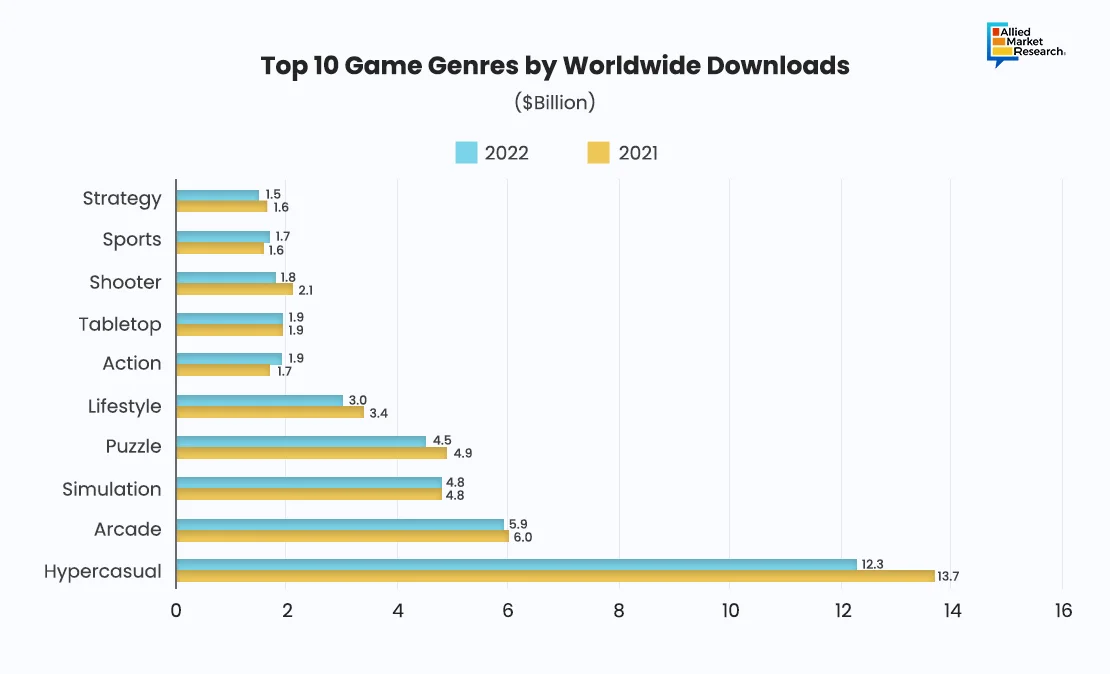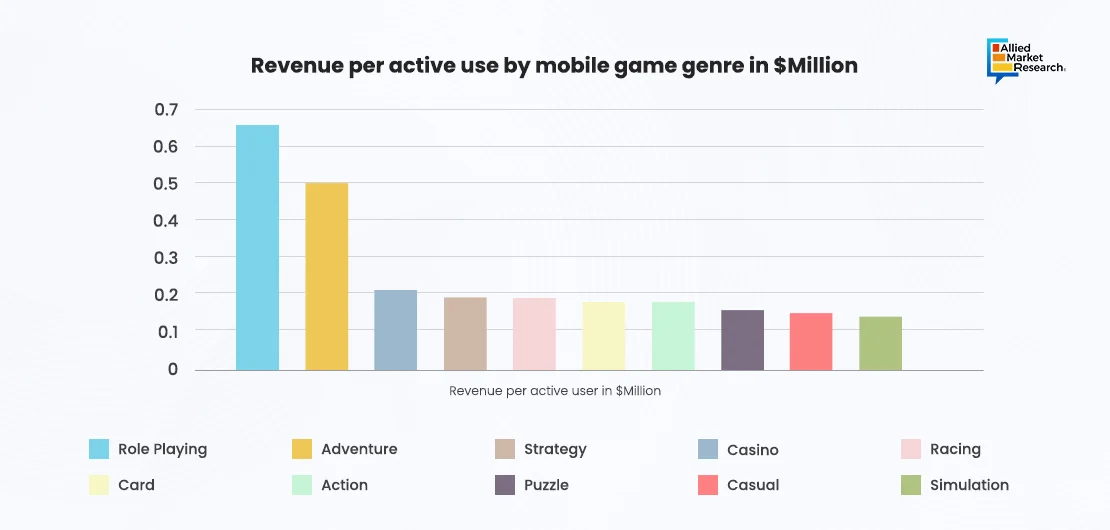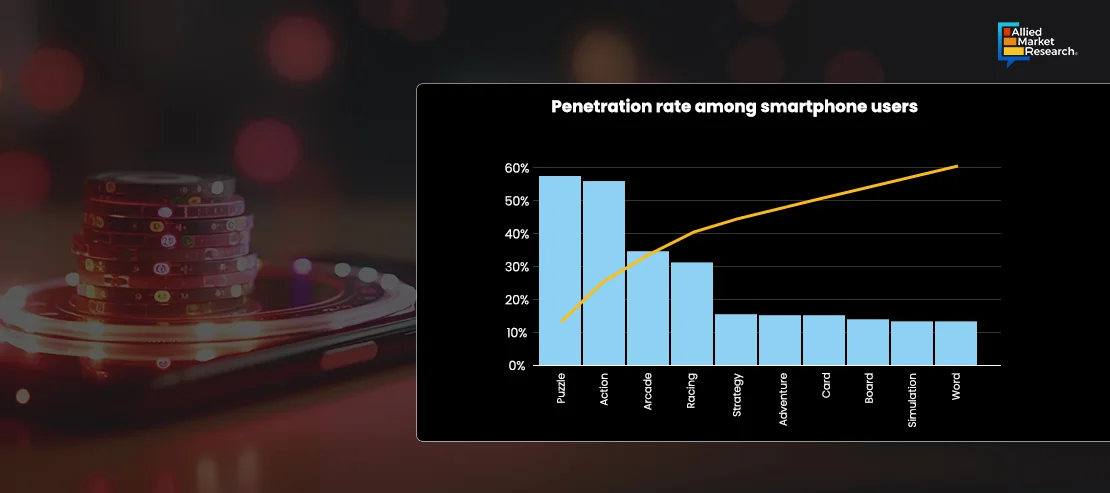Innovation in Mobile Gaming Revolutionizing Digital Entertainment

Digital games specifically created for mobile platforms, such as smartphones, pocket PCs or tablets, wearables, media players, and feature phones, are referred to as mobile gaming. To achieve optimal performance, these games require high-performance central processing units (CPUs), graphics processing units (GPUs), random access memory (RAM), and high-resolution display panels. Through Wi-Fi, Bluetooth, infrared connections, memory cards, and other wireless technologies, they can be installed from the mobile operator portals or the internet. They raise morale, increase creativity, foster social connections, lessen stress, and improve problem-solving abilities. They also improve team-building abilities and concentration. Mobile gaming is gaining tremendous popularity all over the worldwide due to these advantages. Moreover, to accommodate players' contemporary on-the-go lifestyles, the game industry underwent a shift in concentration towards being mobile-first in 2020. This includes gaming studios that had previously concentrated on creating games only for PC. Another factor encouraging PC game makers to concentrate on mobile is the technological advancement of smartphones. They do not have to compromise on the quality of the game because of all the developments in smartphone technology and software. Some of the most well-liked PC and console games are now accessible on mobile devices as a result.
Introduction of Interactive Games
As mobile games continued to multiply, especially with rise of powerful smartphones and increased accessibility to game development tools, the diversity of gaming experiences and the number of players engaging with them continued to expand rapidly, many games such as Pokemon Go incorporated new technologies including AR and jumped the ship by releasing mobile games such as Genshin Impact and PUBG.
Top 10 Game Genres by Worldwide Downloads
The following quantitative extrapolations provide a detailed understanding of the trends in the top 10 game genres, indicating shifts in popularity, market saturation, and emerging interests among mobile gamers.
The provided data states significant trends in the top 10 game genres by worldwide downloads for 2021 and 2022. Hypercasual games retained their position as the most downloaded genre in both years, with 13.7 million downloads in 2021 and 12.3 million downloads in 2022. This indicates a decline of approximately 1.4 million downloads from 2021 to 2022. Arcade games followed closely, with 6 million downloads in 2021 and 5.9 million downloads in 2022, indicating a slight decrease of approximately 0.1 million downloads. Similarly, simulation games maintained their position with 4.8 million downloads in both years. Puzzle games, however, witnessed a decline from 4.9 million downloads in 2021 to 4.5 million downloads in 2022, indicating decrease of approximately 0.4 million downloads.

Lifestyle games experienced a notable decline from 3.4 million downloads in 2021 to 3 million downloads in 2022, representing a decrease of approximately 0.4 million downloads. However, action games witnessed increase from 1.7 million downloads in 2021 to 1.9 million downloads in 2022, marking a rise of about 0.2 million downloads. Shooter games also experienced a decrease from 2.1 million downloads in 2021 to 1.8 million downloads in 2022, showing a decrease of approximately 0.3 million downloads. Tabletop games remained stable at 1.9 million downloads in both years. Sports games saw a slight increase from 1.6 million downloads in 2021 to 1.7 million downloads in 2022, marking a rise of approximately 0.1 million downloads. Finally, strategy games showed a decline from 1.6 million downloads in 2021 to 1.5 million downloads in 2022, indicating a decrease of approximately 0.1 million downloads.
Origin of Mobile Gaming
Mobile gaming has taken a wild turn since it was introduced in the 1990s by games such as Tetris (1984) and Snake (1976). These games became a global phenomenon after their release. They had simple controls and gameplay that almost anyone was capable of understanding and playing.
Later in the early 2000s, games such as Alien Fish Exchange (2000) and NBA 2K1 (2000) further dwelled into new gaming experiences for people.
Evolution and Growth of Mobile Gaming
The next leap in the mobile gaming platform took place after the iPhone was launched in 2007 along with its App Store. The App Store had 500 applications, including games based on touchscreen control. According to Apple Inc., there are more than one billion active iPhones, a remarkable accomplishment for the company and evidence of the phones' enduring popularity and dependability.

In 2009, the game Angry Birds took the world by storm when it reached out to the global market with its popularity.
In 2012, Candy Crush was released, which amassed a massive audience then and still has billions of users. This game is the highest-grossing mobile game of all time. These games were the epitome of mobile gaming then and are still played by many people.
Adoption of Technologies
The current level of adoption of new technologies in the mobile gaming market is extensive, with billions of active players worldwide and a diverse range of demographics engaging in mobile gaming. Mobile games are used in various contexts, including during commuting, waiting in line, relaxing at home, and socializing with friends.
The emergence of new technology is a significant opportunity for the mobile gaming sector. Mobile gaming could change as a result of new technology like augmented reality (AR), virtual reality (VR), and cloud gaming. Mobile games' immersion and interaction can be improved by AR and VR, and cloud gaming can offer seamless access to top-notch games on a variety of platforms. In-game advertisements and microtransactions are only two examples of the additional revenue streams that these technologies may provide for game producers. To make their games stand out from those already on the market, game makers take advantage of these cutting-edge technologies.
For instance, they make interactive environments and items that people can engage with in real time using augmented reality. In addition, they use VR to develop realistic, immersive gaming settings that immerse players in a different universe. Furthermore, improvements in mobile hardware, like 5G networks and more potent processors, help to improve gaming even more and open up new career prospects for game makers. For instance, 5G networks can enhance connectivity and lower latency, enabling real-time multiplayer experiences and more realistic gaming settings.
The adoption of mobile gaming is expected to rise, particularly in emerging markets where smartphone penetration is increasing rapidly. Also, advancements in technology such as 5G networks and improved hardware capabilities are further expected to drive adoption by enabling more immersive gaming experiences and reducing latency in online multiplayer gaming.
The mobile gaming ecosystem is evolving rapidly, with the market producing new innovations in response to changes such as ATT and post-covid player behavior. Changes in cost per install and consolidation between publishers and developers are resulting in industry-wide shifts that challenge established financial models for developing and operating games. In 2022, the Hypercasual product model was most affected, decreasing by 1% yearly downloads, whereas Hybridcasual saw a 13% increase in downloads.
Future of Mobile Gaming
Future capabilities and applications of mobile gaming are to include more advanced augmented reality (AR) and virtual reality (VR) experiences, deeper integration with social media platforms for enhanced multiplayer experiences, and use of artificial intelligence (AI) for personalized gaming experiences tailored to individual players' preferences.

Experts in the gaming industry forecast continued growth in the mobile gaming market, with development roadmaps focusing on enhancing graphics, gameplay mechanics, and social features to attract and retain players. Mainstream adoption potential is high, driven by accessibility and convenience of mobile gaming compared to traditional gaming platforms. Moreover, the adoption of the 5G is expected to accelerate market expansion during the forecast period. Since 5G networks offer far greater bandwidth and lower latency than current 4G networks, they enable new gaming experiences such as real-time multiplayer and augmented reality.
To realize the full potential of mobile gaming, technical advancements in hardware and software are needed to address performance limitations and improve user experiences. Also, business innovations such as new monetization models and marketing strategies are required to sustain growth and profitability in an increasingly competitive market.
A Promising Future for Mobile Gaming
In conclusion, the gaming industry is a dynamic and evolving industry that has grown rapidly over the past few decades. The industry has become a global phenomenon, driven by advancements in technology, accessibility, and the rise of esports. The future of the gaming industry is expected to depend on its ability to address these challenges while continuing to innovate and provide new experiences for gamers globally.


